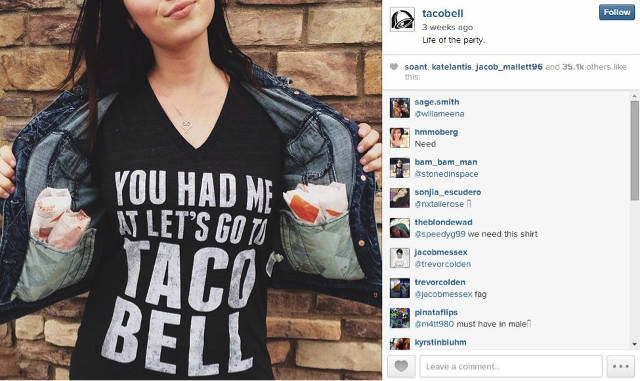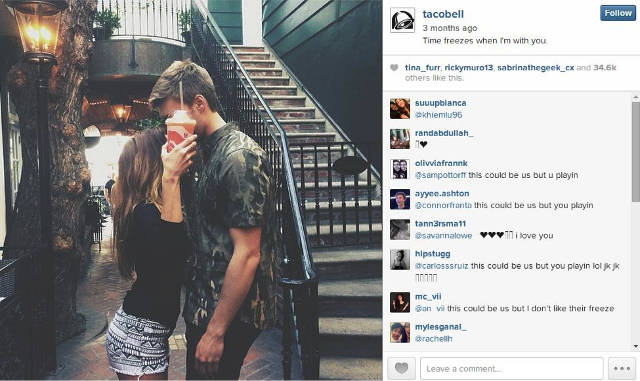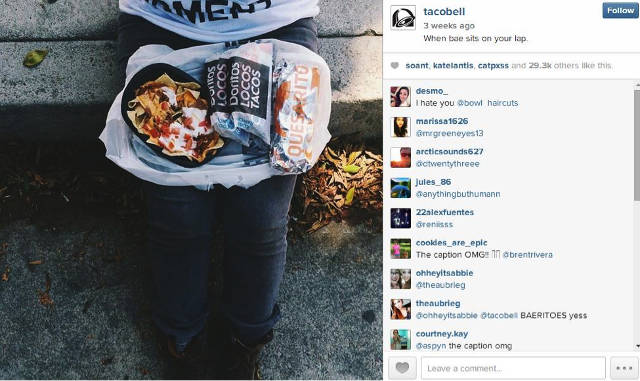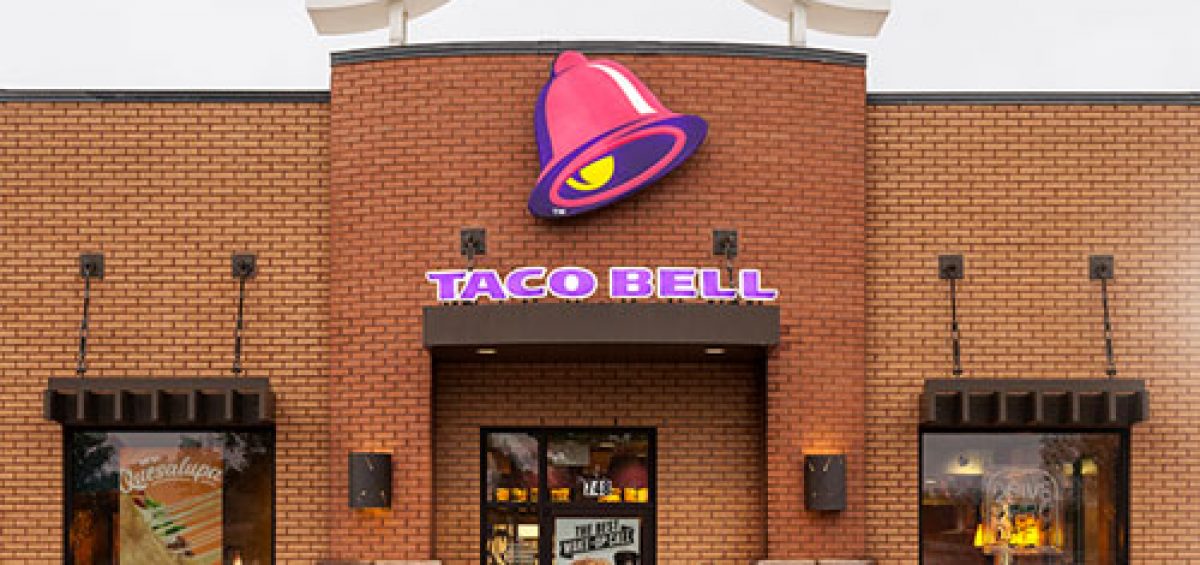
Native Ads might just be the next big thing… the bomb-dot-com in social media marketing in 2014. While most companies and agencies are just testing waters, the Tex-Mex giant Taco Bell has already proved that it is a success when used the right way.
So, what are Native Ads? They are a type of advertising where user experience is used as the framework within which the advertiser gives the content.
Earlier in 2014, Taco Bell went on to commence their newest and largest product launch in their history: the Live Más campaign with Cantina Bell menu. Since the Millennials are the largest consumer demographic of the quick service restaurant chain, their new campaign was primarily targeted at them.
Their new campaign’s propagation platform is primarily Instagram and interestingly, Taco Bell is the only restaurant chain that uses it. However, they also do auxiliary cross-platform marketing to keep ‘Live Más’ campaign live más

Digital marketing specialist, Brad Hines commented (about Taco Bell’s Instagram account), “laid back, unobtrusive, even amateurish in the photography sense, giving Taco Bell an approachable, fun feel and making them almost like a lifestyle brand.”
Native advertising is more of a welcome break for the consumers from all the “in-your-face” editorial advertisements. It puts the user at ease and gains the user’s trust. Hines also said, ““Most brands screw this up with obvious stuff that stands out as an ad and just aggravates the social media user,” This is why Taco Bell’s native advertising is nothing short of a genius and success.

In an interview with Digiday, Mark Chambers the Digitas’ vice president and group director of media shed light on the importance of native advertising. Digitas is the ad agency behind Taco Bell’s “Live Más” campaign.
When asked if native advertising was just a passing fad, he replied saying. “I don’t think it’s a buzzword. The idea of brands creating their own content and being relevant to the user, be it a video or an article, is really important. I think if brands can figure out how to add user-value, then native will become prominent in the future. And it’s not something that just turned up yesterday; it’s been around for a while.”
He also said, “I do think native content and native advertising will increase and come to the forefront next year.”

Supporting this notion, a study conducted by Sharethrough, the following results were concluded about native advertising.
- 25% more consumers were measured to look at in-feed, native ad placements more than standard banners.
- Native ads registered 18% higher lift in purchase intent than banner ads.
- Consumers looked at native ads 2% more than editorial content and spent the same number of seconds viewing.
- 32% of the survey respondents said the native ad “is an ad I would share with a friend of family member” versus just 19% for display ads.

Now, it seems that is no longer a theory but a proven fact. And if you have been in the dire need for out of the box advertising ideas, you might want to think along the lines Taco Bell’s ‘Live Mas’ campaign.
PS. Live Más means live more.
PPS. Taco Bell’s Cinnabon Delights are sinfully delightful.

